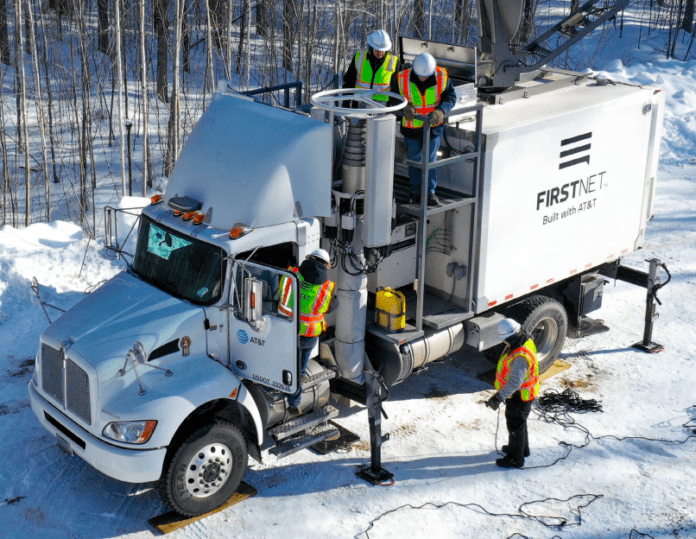The FirstNet Authority has made “significant progress” toward fulfilling its mandate to oversee and manage the build-out and operations of a nationwide cellular network for first responders, according to the authority’s latest annual report to Congress.
The FirstNet Authority is an independent entity that Congress established under the Department of Commerce’s National Telecommunications and Information Administration; in 2017, it awarded a 25-year contract to AT&T to deploy that network as a public-private partnership.
“Our success in serving public safety during this most demanding of years is demonstrated by the data,” wrote FirstNet Executive Director Ed Parkinson in the report. “At the start of [fiscal year] 2020, there were approximately 9,000 public safety agencies and 750,000 connections on the network. By the end of FY 2020, there were more than 13,000 public safety agencies and 1.5 million connections on the network. Time and time again, the FirstNet network proved itself and it earned the trust of thousands of new public safety agencies and personnel who saw the network perform for themselves and their peers.”
The report said that even though the network is only three years into a five-year implementation phase, “progress is overall ahead of schedule and meeting the financial goals established by Congress. More importantly, FirstNet is meeting the real-world needs of first responders in all 50 states, five territories, and the District of Columbia.”
Among FirstNet’s highlights in 2020:
-The FirstNet Authority approved the first re-investments in the network, of $218 million. Those re-investments included expanding the fleet of network deployables and funding the first phase of a multi-year project to enable 5G services for FirstNet subscribers, the report said.
-Network deployment is on-track to meet the Authority’s 2023 nationwide network coverage goal. As of the end of FirstNet’s fiscal year 2020, AT&T had launched Band 14 coverage in 700 markets and reached 80% of the nationwide coverage.
-FirstNet continues to engage with public safety organizations and individuals directly, to gather their input on the deployment and direction of the network, features and devices. The organization said that during the past year, it conducted more than 1,250 engagements in all of the U.S. states and five territories plus the District of Columbia, across all public safety disciplines.
-The report highlighted a sizable increase in rural coverage, saying that by the end of its FY 2020, rural coverage had increased to more than 54% or about 27.9 million people. That coverage “surpasses the network deployment targets for the year as FirstNet continues the initial five-year
network deployment, scheduled for completion in 2023.”
-The number of FirstNet-certified devices has reached 20, and the report said that the number of device manufacturers who are producing devices that can operate in the FirstNet ecosystem grew from 27 in 2019 to 41 in 2020.
-AT&T launched the FirstNet push-to-talk service in March 2020, followed by a downloadable app released in May 2020 that also supported FNPTT. The report said that LMR to FirstNet PTT interfaces are expected to be available for talk-group interconnectivity in fiscal year 2021.
In addition to the overall numbers, the report highlighted how specific agencies have used the FirstNet-AT&T network in the past year, including the city of Alexandria, Virginia relying on FirstNet to enable its dispatchers to take 911 calls remotely during the pandemic; the Navajo Nation relying on FirstNet SatCOLTs as part of its pandemic response; Land Mobile Radio to LTE integration being used by the Indiana Integrated Public Safety Commission; and the first deployment of FirstNet One, a 55-foot blimp that was used in August of 2020 to support disaster recovery in Lousiana after Hurricane Laura.
The report is available here.

